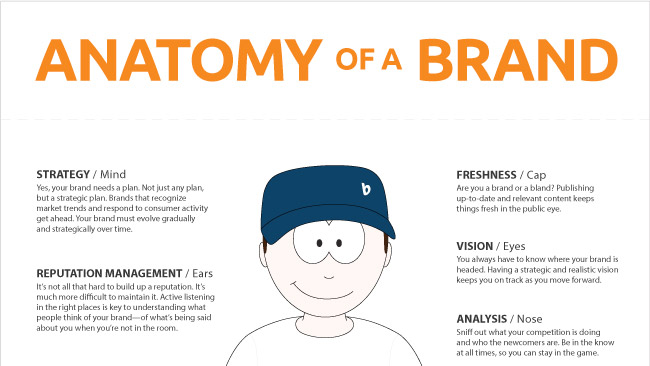Is your branding message truly getting across or are you simply blowing hot air? If you don’t have definitive guidelines for your brand and if you are not following them across all platforms, you could be missing out. Here are several ways to boost your branding and ensure that you are actually creating a cohesive and recognizable brand for your small business.
Define Your Brand Guidelines
Make sure that every promotional piece, press release, and Tweet that leaves your office conforms to your branding guidelines. Clearly outlining your brand expectations and how your logo, mascot, and merchandise are to be referred to can prevent mismatches and mixed messaging for your brand.
Disney is one of the masters of branding and everything they put out is designed to clearly represent the brand. From the annual blockbuster movie to the whimsical, talking trash cans at the theme parks, every single item is carefully created and screened with the big picture in mind. A simple list that depicts phrases or things we “always” do when speaking with customers or promoting the brand can help create a consistent and positive message across all of your platforms.
Putting together a Brand Guideline for your company can help you make sure everyone is on the same page – even if your business is small. Here are a few areas to address:
Logo: Using your logo consistently across all channels adds cohesiveness to your brand. For example, is it ok to display your logo without your tagline, or not? Do you have a version of your logo to use on light colored backgrounds and a version you use for dark colored backgrounds? Is there an emblem in your logo that can stand alone, or do you always want to include the wordmark with the emblem? Staying within specific brand guidelines for your logo will help boost recall and recognition of your brand.
Color: Even a color as simple as “red” has variation to it, and everyone has their own interpretation. Setting guidelines on what your brand colors are and how to use them will help everyone stay within the lines of your brand when working on print, web, or promotional materials. Identifying a Pantone (print) and corresponding hex color (web) will help keep your brand looking sharp and consistent everywhere your prospects and customers see you.
Voice & Tone: Branding is visual, but there is also a copy element that comes to play. For instance, carrying a serious tone on your website while you’re funny and irreverent on social media would give your brand a bit of an identity crisis. Decide if the voice and tone should be professional, playful, comedic, introspective – whatever best reflects your brand and culture.
Naming Conventions: What you call things can increase brand equity – and even help build a sense of community around your business. Think Mickey Mouse Club Mouseketeers, Rackspace Rackers, and, of course, Hatchbuckers. From your tagline to your product and service lines, naming consistently gives and instant lift to your branding.
Message Consistency
Once you’ve established some brand guidelines, you need to share them with everyone on the team, from the employees who create the packaging and images to the ones who answer the phones. One of the most often overlooked branding slipups is via your social media channels; make sure every site you use has a fully branded profile and that the person posting your tweets, updates, Instagram shots, and pins is correctly representing your brand.
Enhance your Brand with Inbound Marketing
Inbound marketing allows you to position your brand as a go-to for education, innovation and expertise. When you put informative branded content out there for prospects to find, use, and share you’re building focus on your brand in a positive way. It doesn’t matter what you sell as long as you’re getting information into the hands of people who can use it in a good light. This will automatically enhances your brand.
Leverage Social Media
If you have social media accounts just because you “should”, you’re not using them with branding in mind. Your social media accounts can be valuable brand builders, provided you cultivate followers and actually engage with users. Simply throwing up a (branded) profile page isn’t enough, you need to join the conversation. A quick look at your social media accounts can tell you how you are doing in this area. If you are not consistently posting and interacting with followers and connections, you’re missing out on a powerful way to build your brand.
Branding may seem like a task left for the bigger guys, but defining your brand and staying consistent across all channels can be extremely valuable to your small business. Invest some time in developing your brand to develop instant recognition and recall of your business when it’s time for your audience to buy.
Original source of the infographic: Better Business Brand
